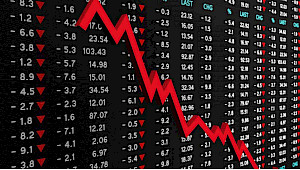The dirty truth about why we need mining if we want a cleaner world
November 09, 2023Originally published in The Toronto Star on October 31, 2023 as contributing columnist
The mining industry has had its share of abuse over the past few decades. And lately it feels like the world — especially the younger generation — has been convinced that we can all do without it.
I’ve heard it all; mining is dirty, it employs child labour, destroys the forests, et cetera. But the facts suggest otherwise.
Not to be confused with illegal and informal miners, industrialized formal mining is one of the most environmentally regulated industries, regardless of jurisdiction. On its own, that may or may not resonate with the younger generation, but one other important fact surely will: Without mining, how do they hope to drive their environmentally sound electric vehicles or take selfies on their iPhones?
The reality is that our world is facing a future shortage of the minerals required to make the transition to clean energy. Copper, arguably the most important energy transition metal, is facing a dire shortage. Copper consumption by green energy sectors globally is expected to jump fivefold in the next decade. And other important metals are also in short supply.
According to a report by Wood McKenzie, mining companies will need to spend $1.7 trillion over the next 15 years to supply enough lithium, graphite, cobalt, and nickel to shift to a low-carbon world.
Billionaire mining financier Robert Friedland, a client from my old investment-banking days, recently told me, “We’re sitting on a cliff with most existing copper mines suffering from declining grade and production while discovering and developing new mines is getting ever more difficult due to socio-environmental concerns and a lack of investment in exploration to find the next generation of long-life deposits.
Global exploration budgets are plummeting
The reasons for the projected shortages are many. Firstly, the mining sector has experienced a chronic underinvestment in exploration and development over the past decade. The bust that followed the commodity boom in the early 2000s left many senior mining companies battered and bruised and consequently, they drastically curtailed their exploration and development programs.
Global exploration budgets in 2021 were half of what they were in 2012, and 80 per cent of new copper production is coming from just five mines, all relatively small operations. It’s forecast that more than 200 copper mines will run out of ore before 2035.
The shifting geopolitical landscape will also add to supply shortages. Some of the largest copper producing countries are experiencing serious domestic issues or are in some form of conflict with the west.
Chile, the largest copper producer in the world, is facing a regime of higher taxes and royalties under a new leftist government. Peru, the second largest producer, is experiencing internal turbulence. Bloomberg estimates that 30 per cent of the country’s production — roughly three per cent of the global total — is imperiled because of political turmoil.
The world’s fourth and sixth largest producers, China and Russia, well, we all know what’s happening there. (China recently unveiled plans to restrict exports of graphite — a mineral crucial to the manufacture of batteries for electric vehicles.)
Major deposits around the world are ‘mined out’
Other, ‘friendlier’ nations are merely looking to restrict metal exports to secure for their own needs. Indonesia’s export bans on nickel are aimed at luring investment in downstream sectors, creating domestic jobs and spurring a rise in shipments of more valuable products.
Lastly, as major deposits around the world are ‘mined out,’ the ore grades are falling. In simple terms, this means that the cost of mining increases substantially, as it requires moving more dirt around to get smaller amounts of ore.
So, what to do about this impending metals shortage?
As a good start Canada and the U.S. announced the Canada-U.S. Joint Action Plan on Critical Minerals Collaboration, advancing our mutual interest in securing supply chains for the minerals needed for important manufacturing sectors, including communication technology, aerospace and defence, and clean technology. Canada is an important supplier of 13 of the 35 minerals that the U.S. has identified as critical to economic and national security. Funding and tax breaks will hopefully spur exploration and development in these mineral categories.
That said, I am a firm believer that governments can only do so much and it’s the private sector that we need to rely on to get the job done. And given that, for the moment, the senior mining companies are still too gun shy to invest heavily in exploration and development, it leaves the task up to the junior mining sector.
Risk, reward, heartache, and thrill
As someone who has spent more than forty years financing and creating junior mining companies, I know full well what is involved in terms of risk, reward, heartache, and thrill. The fact is that investing in junior miners is a risky proposition, and fortunes are made and lost at the end of a drill bit.
It’s not exactly made for widows and orphans. But it’s the junior miners that usually discover and develop new ore bodies which for the most part are acquired by the senior companies.
Just ask Robert Friedland, whose Ivanhoe Mine’s Kamoa-Kakula mining complex in the Democratic Republic of Congo is set to become one of the world’s greatest copper mines. And then there is his earlier discovery and development of Oyu Tolgoi mine in Mongolia, one of the largest known copper and gold deposits in the world. Both operations required risking vast sums of money and many years to discover and develop.
Similarly, my late friend Lukas Lundin created great wealth by making risky bets on exploration. Of course, the flip side to these success stories is a landscape littered with the broken dreams of mining promoters, bankers, and investors. Investors need to tread carefully with eyes wide open and generally back only those mining entrepreneurs with a proven history.
Big mining companies are swimming in cash
Globally, there are more than 3,000 junior mining companies and fewer than 50 major miners. The seniors are currently swimming in cash, whereas the juniors are starving due to a complete lack of investor interest in the sector. I have never seen such a disparity in values between the current metals prices and the share valuations of junior miners.
Here’s an idea for the seniors to consider while the junior sector waits for market sentiment to improve: Make lead order minority investments in the juniors which will allow them to secure additional funds from the markets. A relatively small investment by a senior mining company is a great endorsement. Investors take comfort in knowing a senior has invested and if the project succeeds, the major mining company has a leg up in acquiring it.
It takes anywhere from 15 to 20 years from discovery to production. So, time is of the essence if we are to meet the growing demand for metals without driving the metals prices through the roof. Undiscovered deposits exist, they just need risk capital to find and develop them.
Junior companies are the unsung heroes of this transition and although the TikTok generation probably won’t ever think mining is cool, they won’t survive without it.










